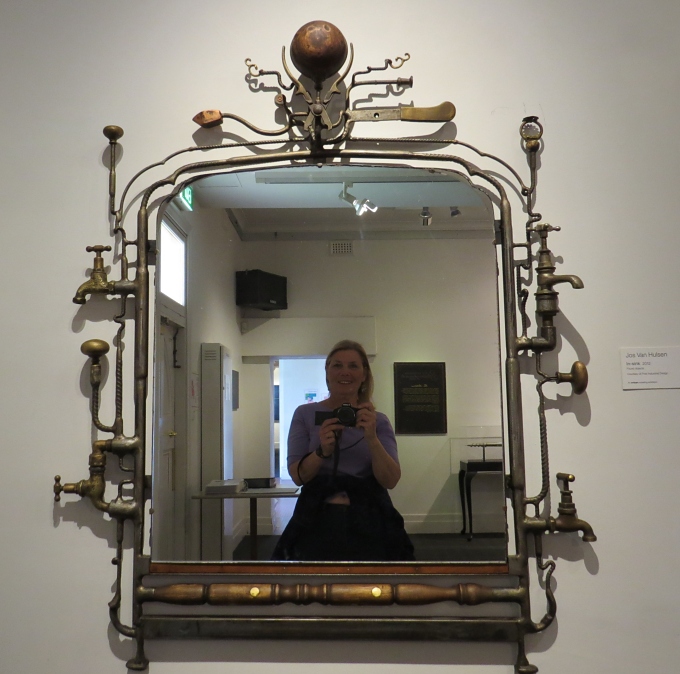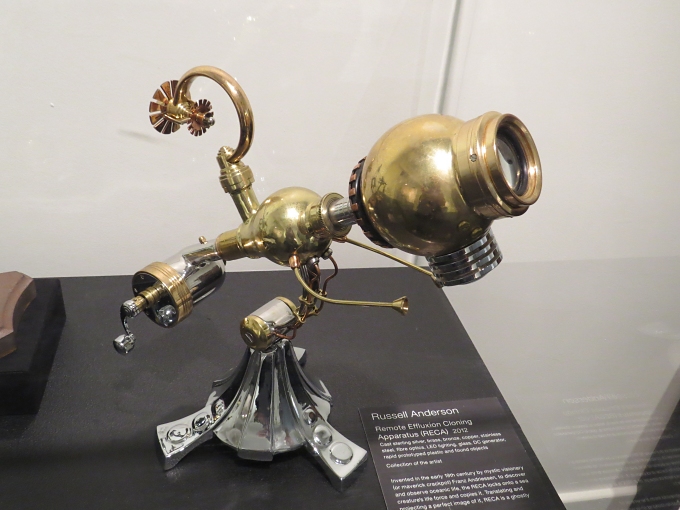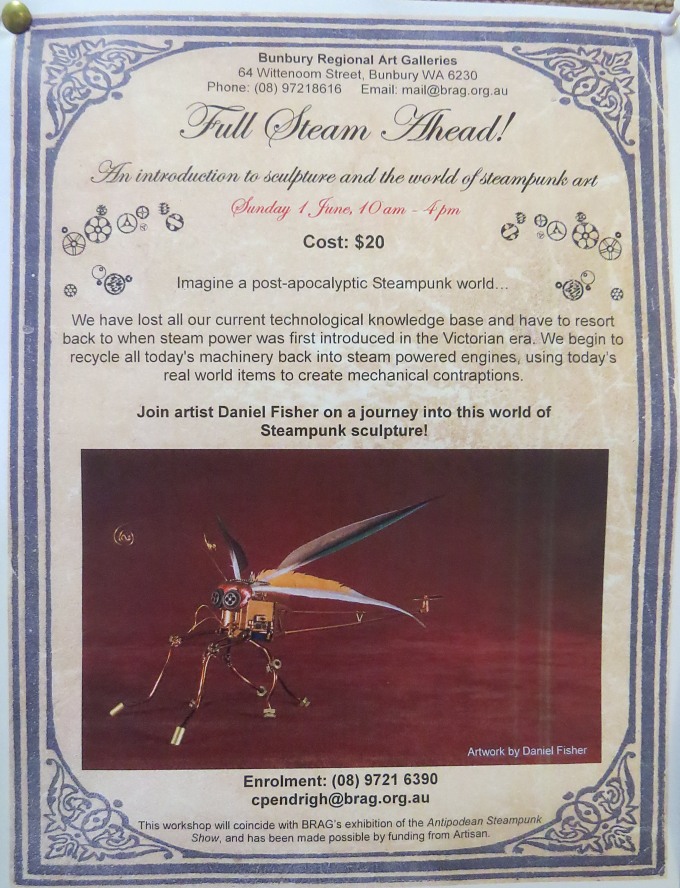Steampunk in Bunbury
/Did you ever experience one of those times when you visit some place just because it's there with no expectations at all and it turns out to be wonderful? We visited the Bunbury Art Galleries, housed in the converted Sisters of Mercy convent, just because it looked interesting as we walked by. Built in 1897, the convent building has been restored and is heritage-listed with much of its original architectural conventions preserved including the stained-glass windows, a choir loft and chapel … a nice place to display artwork.
A traveling exhibit entitled “The Antipodean Steampunk Show” was featured in the chapel. Steampunk? No idea? Well, according to what we read, the term “steampunk” was first coined in 1987, by sci-fi author K.W. Jeter (Blade Runner) to describe the alternate-history sci-fi adventures he and some fellow writers had been working on, “set in a re-imagined, futuristic, steam-technology world”, much akin to the works of Jules Verne and H.G. Wells. That's the hard-to-understand definition, but what we saw was pure fun … amazing, out-of-the-box, ingenious contraptions and costumes and artwork and even videos that worked.
Many of the artists/artisans are cross-disciplined … there were works by a physicist/artist and a jeweller/taxidermist. Some artists are tinkerers and hobbyists; others devote a good portion of their life to this type of art. Tim Wetherell, physicist/artist, offered a piece The Clockwork Universe, that caught my fancy.
The most common materials used in steampunk seem to be brass, copper, iron, polished wood and glass, as well as “found objects” and “shiny things” which seem to play an important role. There was a mirror, for instance, entitled In-sink by Jos Van Hulsen that was indeed a mirror, ornamented with copper tubing, bronze faucets and brass doorknobs. You have to pay close attention to the detail … it's all in the detail. Yes, that's me “steampunk-writer” taking the pic. Couldn't avoid a selfie.
There's a lot of over-ornamentation. The use of cogs, wings, hearts, military insignia and compasses is common. We also saw airships, rayguns and, of course, all things steam engine. Take a look at these gaiters by the artist known as Pendragon. It was hard to look at a piece just once. You had to look closely, walk around it then look again, to take it all in.
Russell Anderson's Remote Effluxion Cloning Apparatus was particularly fascinating, though we were unable to get it to work. All in all, the exhibits were clever, imaginative and tongue-in-cheek appealing.
I might add that this exhibit was only in the chapel of the Bunbury Art Galleries. We did wander around the rest of the building's many nooks and crannies. Upstairs we saw the works of Peter Dailey, which were, to say the least, thought-provoking. What was more thought-provoking, however, was that Dailey received his funding from The Syndicate, a Western Australian philanthropic collaboration that grants promising artists $100,000 to create ten pieces in two years. How refreshing.
We noted a brochure on the way out for Steampunk Design classes. It sounded like fun, but we won't be around. I also learned there's a World's Fair of Steampunk coming up later in May 2014 in, of all places, Piscataway, New Jersey. That would be over the top. Still time to buy your tickets!
More about our Bunbury explorations tomorrow … we're still trying to get our arms around steampunk.









